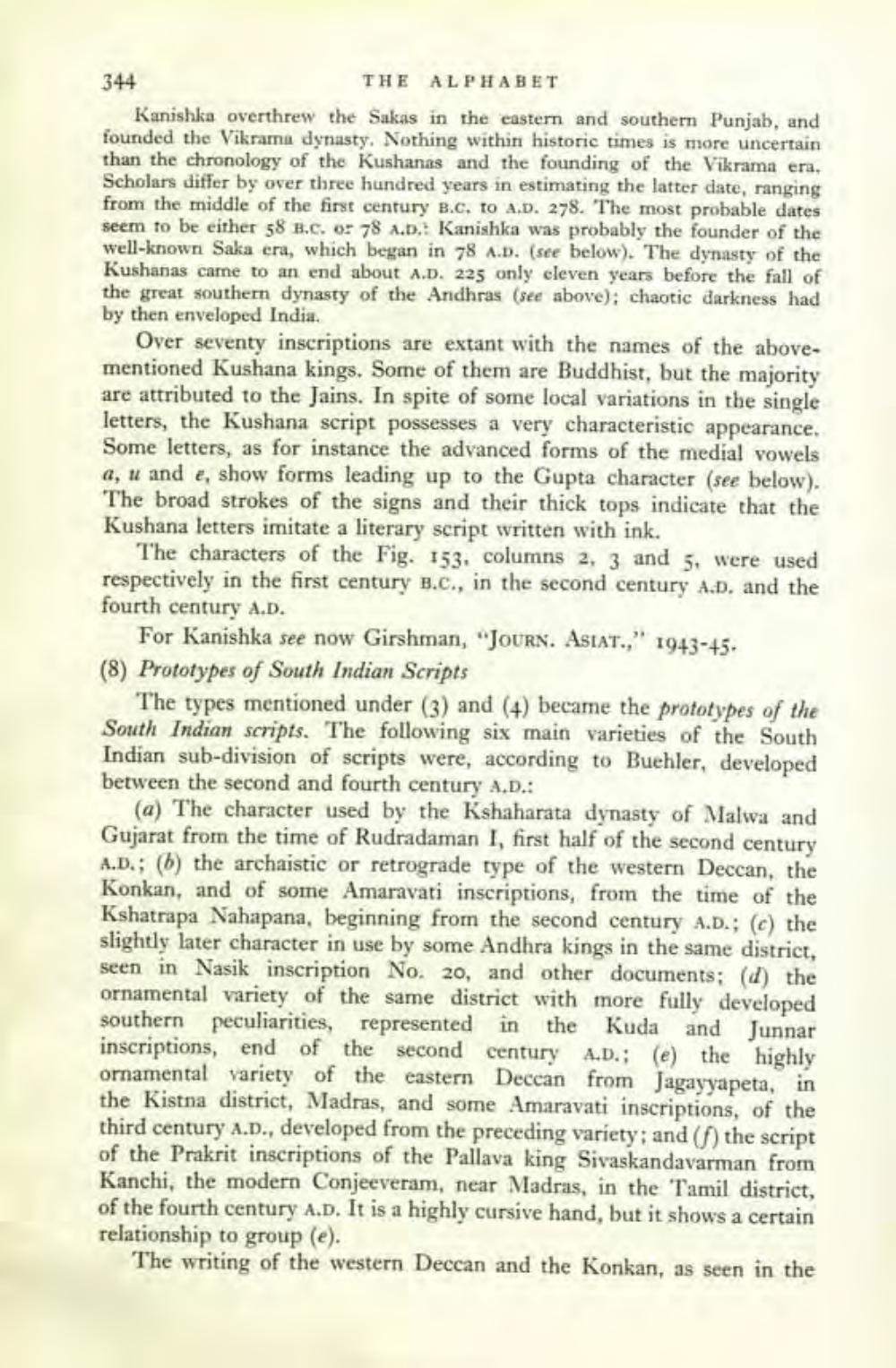________________
344
THE ALPHABET
Kanishka overthrew the Sakas in the eastern and southern Punjab, and founded the Vikrama dynasty. Nothing within historic times is more uncertain than the chronology of the Kushanas and the founding of the Vikrama era, Scholars differ by over three hundred years in estimating the latter date, ranging from the middle of the first century B.C. to A.D. 278. The most probable dates seem to be either 58 B.C. or 78 A.D.: Kanishka was probably the founder of the well-known Saka era, which began in 78 A.D. (see below). The dynasty of the Kushanas came to an end about A.D. 225 only eleven years before the fall of the great southern dynasty of the Andhras (see above); chaotic darkness had by then enveloped India.
Over seventy inscriptions are extant with the names of the abovementioned Kushana kings. Some of them are Buddhist, but the majority are attributed to the Jains. In spite of some local variations in the single letters, the Kushana script possesses a very characteristic appearance. Some letters, as for instance the advanced forms of the medial vowels a, u and e, show forms leading up to the Gupta character (see below). The broad strokes of the signs and their thick tops indicate that the Kushana letters imitate a literary script written with ink.
The characters of the Fig. 153, columns 2, 3 and 5, were used respectively in the first century B.C., in the second century A.D. and the fourth century A.D.
For Kanishka see now Girshman, "JOURN. ASIAT.," 1943-45(8) Prototypes of South Indian Scripts
The types mentioned under (3) and (4) became the prototypes of the South Indian scripts. The following six main varieties of the South Indian sub-division of scripts were, according to Buehler, developed between the second and fourth century A.D.:
(a) The character used by the Kshaharata dynasty of Malwa and Gujarat from the time of Rudradaman I, first half of the second century A.D.; (b) the archaistic or retrograde type of the western Deccan, the Konkan, and of some Amaravati inscriptions, from the time of the Kshatrapa Nahapana, beginning from the second century A.D.; (c) the slightly later character in use by some Andhra kings in the same district, seen in Nasik inscription No. 20, and other documents; (d) the ornamental variety of the same district with more fully developed southern peculiarities, represented in the Kuda and Junnar inscriptions, end of the second century A.D.; (e) the highly ornamental variety of the eastern Deccan from Jagayyapeta, in the Kistna district, Madras, and some Amaravati inscriptions, of the third century A.D., developed from the preceding variety; and (f) the script of the Prakrit inscriptions of the Pallava king Sivaskandavarman from Kanchi, the modern Conjeeveram, near Madras, in the Tamil district, of the fourth century A.D. It is a highly cursive hand, but it shows a certain relationship to group (e).
The writing of the western Deccan and the Konkan, as seen in the




